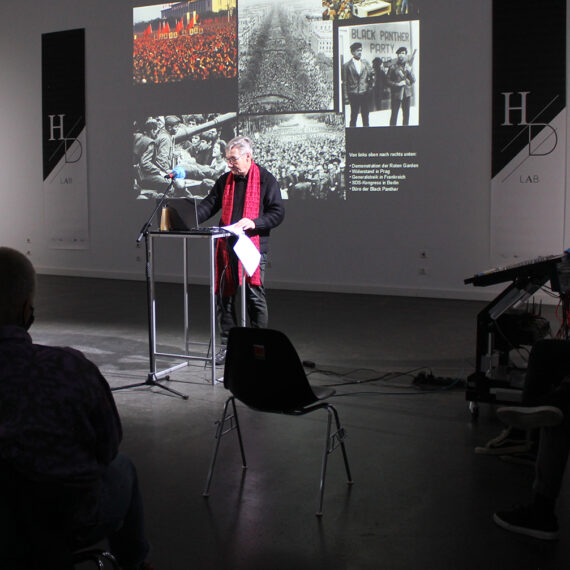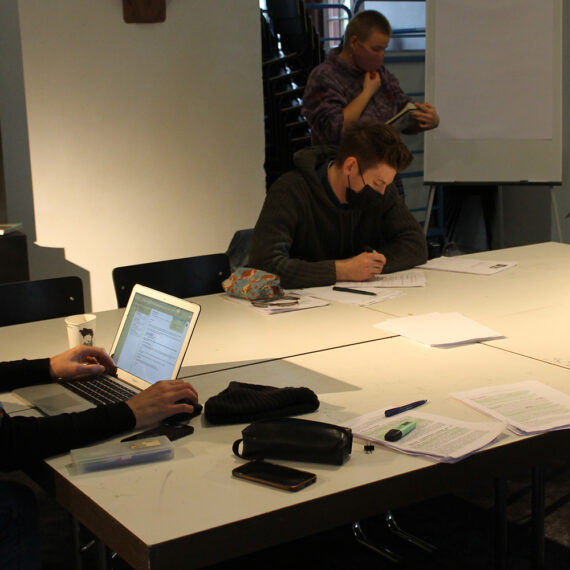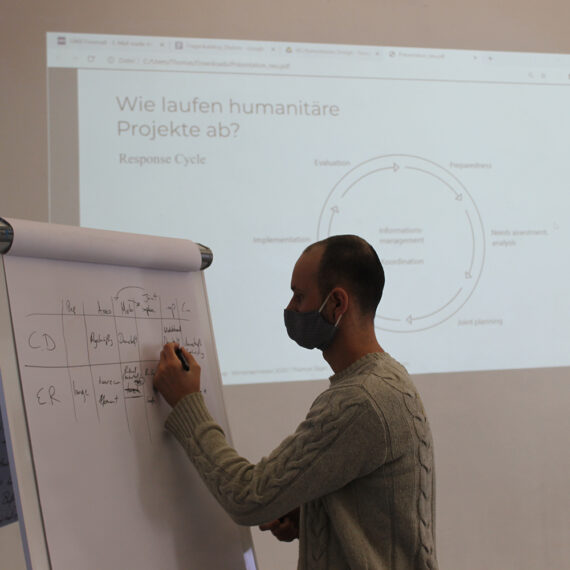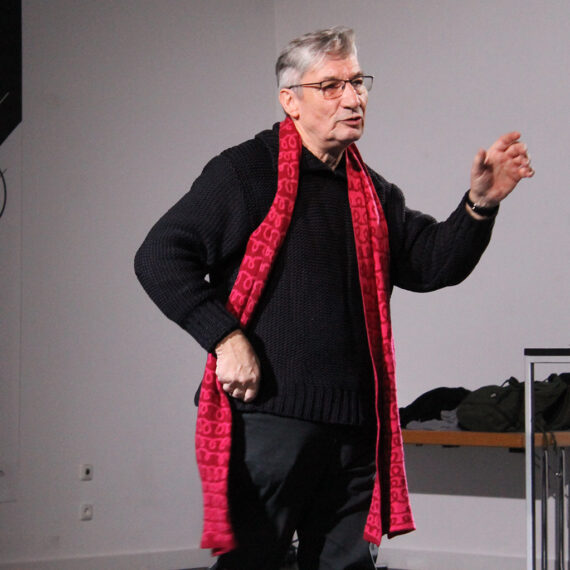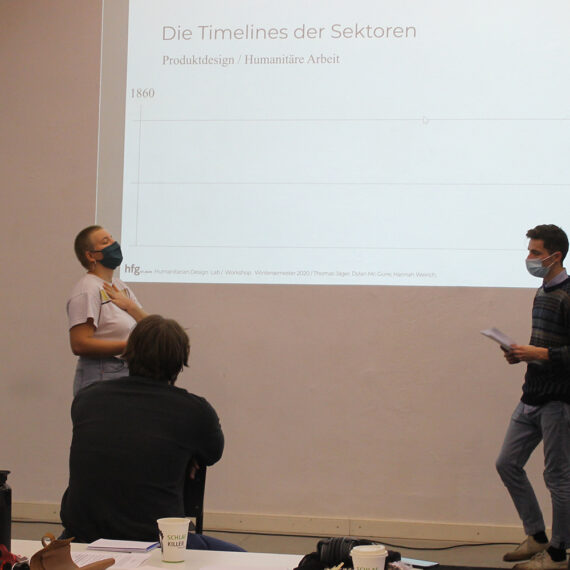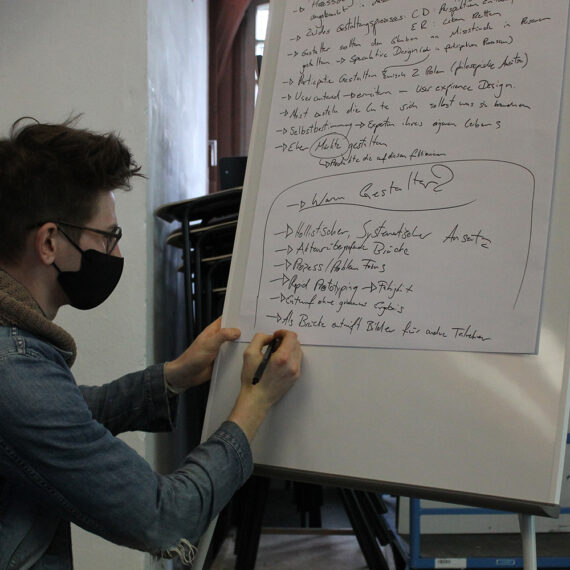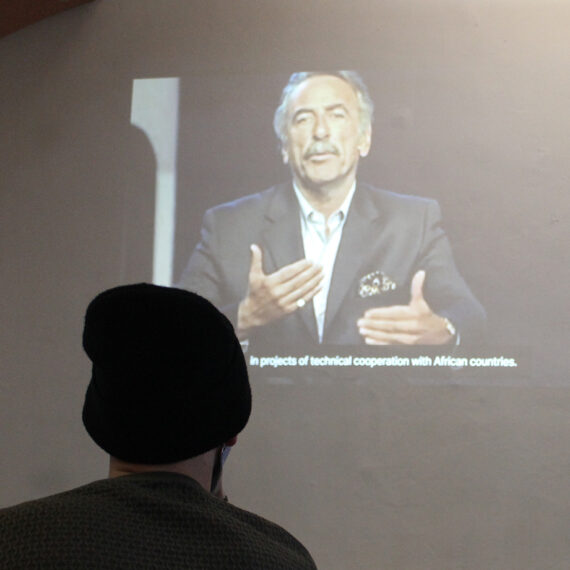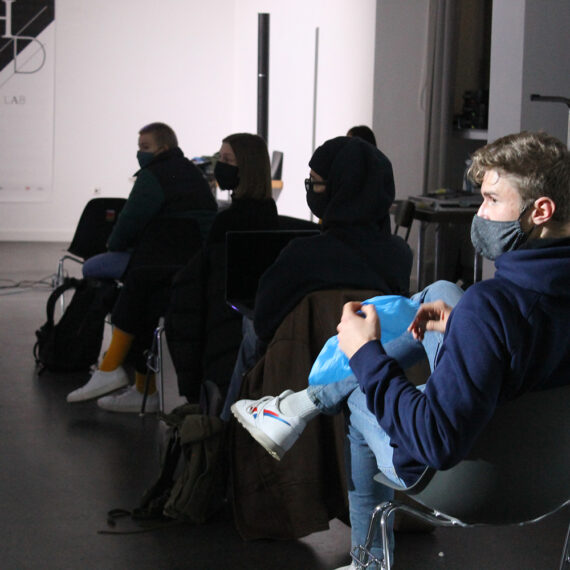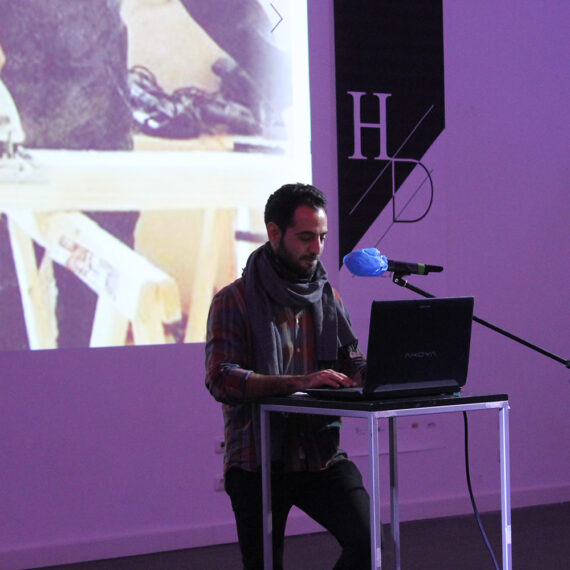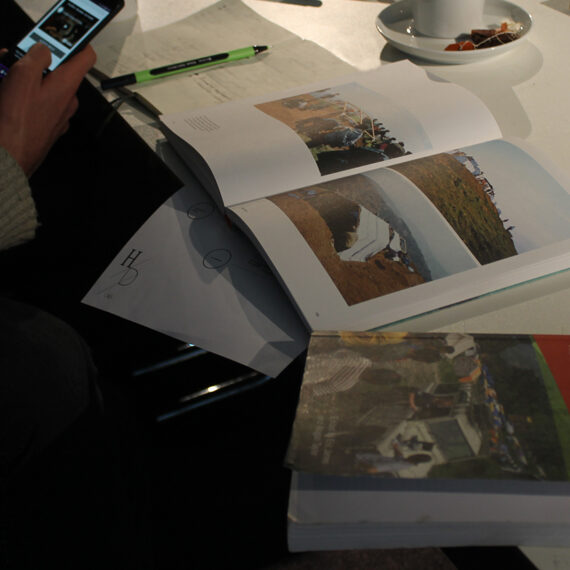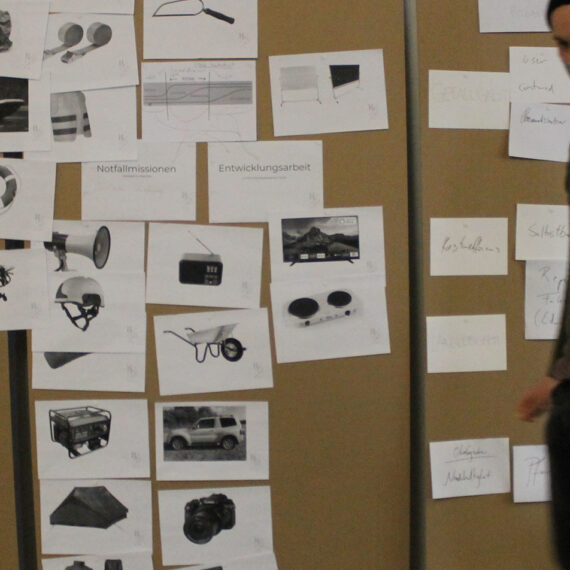THE VOICE of
a humanitarian
Finding answers is not possible as a single group or individual. It is more about finding the consensus in the opinions of all involved parties.
Dr. Thomas Seibert from medico international did the start. He gave a historical overview, of the political role of design and the fieldwork of medico international.
Discussing future global shifts with the students and looking critically at the potential benefits design can create for humanitarian projects, the view of medico got clear to the participants and public and encouraged a deeper conversation.


